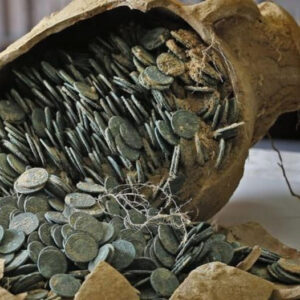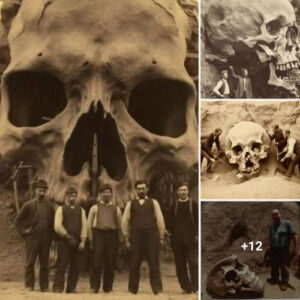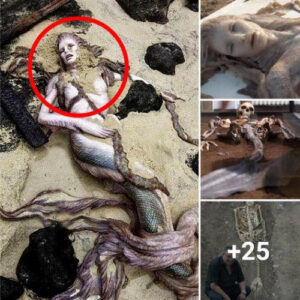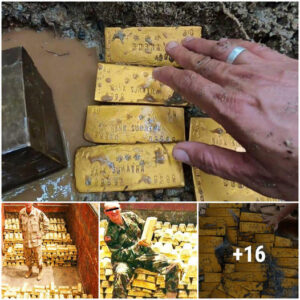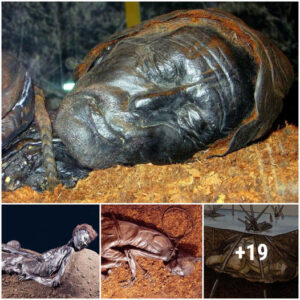The necropolis in Varna, a cemetery from 4,660–4,450 BC on the Bulgarian Black Sea coast, is home to the oldest gold objects that are now known to exist.
The Necropolis of Varna, also known as the Varna Cemetery, is a significant cemetery in the western industrial zone of Varna and is widely regarded as one of the most significant prehistoric archeological sites in the entire globe. It is a product of the Varna culture’s chalcolitic (copper phase), which lasted between 6,000 and 6,500 years ago.
According to the Archeology of Bulgaria, a total of 294 tombs containing around 3,000 gold artifacts have been found in the necropolis of Varna. Despite the fact that numerous elite tombs have been found, Tomb 43 stands out from the rest. The skeletal bones of a tall guy who appeared to be a monarch or leader have been found by archaeologists.
The golden treasure in Varna was unintentionally discovered in 1972, while the area was being prepared for a tin factory, when a 22-year-old excavator operator named Raycho Marinov dug up a number of artifacts and transported them to his home. A few days later, he made the decision to get in touch with some nearby archaeologists and inform them of the find.
The necropolis’ 294 calcolithic graves were subsequently discovered during the excavation process. The tombs from the Copper Period, where the golden тsus of Varna was discovered, have radiocarbon dates that place them between 4,560 and 4,450 BC.
The Neolithic and Chalcolithic eras in modern-day Bulgaria and the remainder of the Balkans, the Lower Danube, and the west coast of the Black Sea are where ancient European human civilization first emerged and produced all of these weird тsus. Some academics refer to this ancient civilization as “old Europe.”
Rock salt was undoubtedly shipped from Provadiya-Solnitsata (“Salt Well”), according to discoveries from the necropolis, which also suggests that Varna’s culture had commercial links with faraway regions of the Black Sea and Mediterranean. The Mediterranean mollusk Spondyla’s seashells, which were discovered in the tombs of the Varna Necropolis and other Chalcolitic sites in northern Bulgaria, are also thought to have served as a form of currency in antiquity, according to archaeologists.
Archaeologists also think that the Balkan Peninsula (southeastern Europe) has had the form of a state and a royal institution since the Copper Age because several of the unearthed tombs contain significant amounts of gold.
With a combined weight of 6.5 kg, the more than 3,000 gold artifacts at the Gold Esu brewery are classified into 28 different varieties.
As previously stated, grave no. 43 in the central section of the Varna necropolis was the location of one of the most intriguing inventories. It is reportedly between 1.70 and 1.75 meters (5 feet 6 and 8 inches) tall. Because his tomb contained more than 1.5 kg of gold, archaeologists surmise that he was buried alongside other notable members of his community, most likely a monarch or king.
A stone ax, a copper ax with gold accents, ten huge applications, numerous rings—some of which hang on strings—two necklaces, and chains are among the gold accessories. ribbons and other decorations with gold accents.
Archaeologists discovered more than 850 gold artifacts, including a tiara, earrings, necklace, belt, bracelet, breastplate, gold scepter with hammer, and gold model, in Tomb No. 36, a symbolic tomb, which was one of the other tombs on the site that was investigated. 30 models of horn heads and two gold bars with animal representations were pruned together.
The artifacts were discovered wrapped in a gold cloth that traced the contours of a human torso on the right, indicating that the tomb contained a male burial mound. Archaeologists once thought of gold objects as royal emblems.
Graves Nos. 1, 4, and 5 in the Chalcolitic Necropolis in Varna also have similar “royal” graves. The function of the blacksmith, who as the creator superseded the position of the Great Mother and changed the matriarchal society into a patriarchal one, is celebrated in many findings from the Varna Chalcolitic Necropolis.
Because metal was then a state emblem rather than an economic tool, in ancient society, the role of a carpenter was equivalent to that of a king.
Only around 30% of the necropolis’s rough terrain has been dug out thus far.

